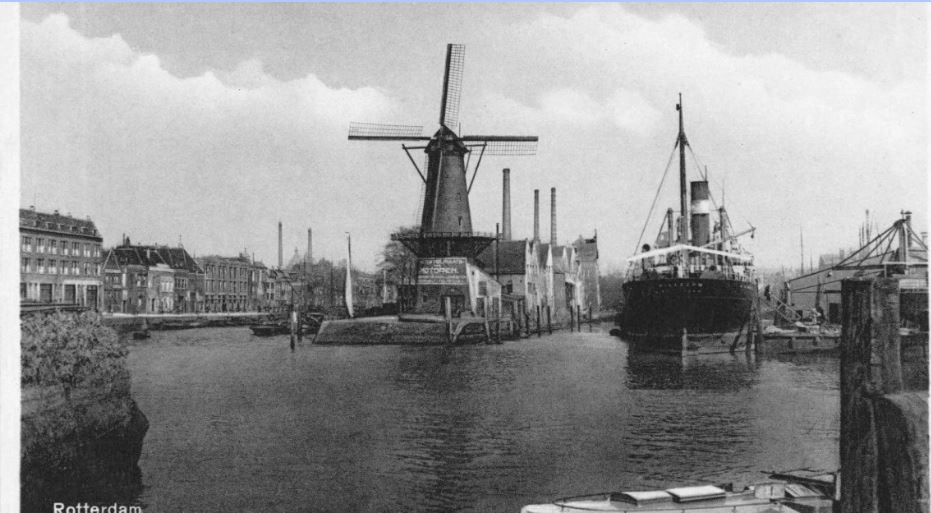Philippe Aghion and Peter Howitt have been jointly awarded the 2025 Nobel Prize in Economic Sciences with Joel Mokyr ‘for having explained innovation-driven economic growth’. Aghion and Howitt were cited by the Nobel committee ‘for the theory of sustained growth through creative destruction’. As this column explains, their work transformed creative destruction from an evocative metaphor into a rigorous analytical framework. The Nobel recognition honours research that has fundamentally reshaped how economists understand the engines of prosperity and technological progress.
The idea of ‘creative destruction’ was first coined in the 1940s by the Austrian economist Joseph Schumpeter. He used the term to encapsulate the idea that economic progress carries with it significant disruption: every major innovation since the industrial age – from steam engines to the internet and artificial intelligence – has displaced older technologies, jobs and firms. But for 50 years, Schumpeter’s insight remained largely descriptive and qualitative.
What the new Nobel laureates Philippe Aghion and Peter Howitt accomplished was to transform this intuition into a rigorous mathematical framework that could explain the precise mechanisms, incentives and conditions under which creative destruction generates aggregate growth. The collaboration between the French economist Aghion and Canadian-born Howitt yielded a model that explained how innovation creates a never-ending cycle where new products and production methods replace old ones, driving economic growth. Growth can continue despite the discouraging effect of being creatively destroyed later.
In their landmark 1992 article in Econometrica (after a five-year publication process from initial submission in 1987), Aghion and Howitt constructed a model demonstrating how creative destruction works: when a new and better product enters the market, companies selling older products lose out. The innovation is creative because it represents something new and valuable, but it is also destructive because companies whose technology becomes obsolete are outcompeted and displaced.
Their paper bought Schumpeter’s vision to life. It has over 17,000 citations from other researchers, and it has become the foundation for decades of subsequent work on innovation and growth. According to Howitt, Aghion predicted from the beginning that this work would win them the Nobel Prize, a confidence that proved prescient (Committee for the Prize in Economic Sciences in Memory of Alfred Nobel 2025).
The Aghion and Howitt framework allows growth theory to make close contact with real world data on firm and product dynamics. And their model has led to new insights about the social versus private returns to innovation, the distributional implications of innovation and potential political barriers to innovation.
Creative destruction meets the micro data
A key contribution of the Aghion and Howitt models is that they inspired researchers to connect growth theory to micro data on firms. For example, Klette and Kortum (2004) construct a model of multiproduct firms that exhibit employment and sales dynamics as their portfolio of products rises and falls with creative destruction. Lentz and Mortensen (2008) and Luttmer (2011) build on this work and explicitly connect creative destruction to firm dynamics in structural models. Likewise, Acemoglu et al. (2018) relate patterns of firm dynamics, patenting and R&D in a structural growth model.
Theories of growth driven by brand new varieties, or quality improvements of their own products by incumbent firms, predict very little employment and sales reallocation across firms and products. They often feature no reason for existing firms to shrink and die. These are peaceful theories of growth.
In contrast, examples of firms shrinking and dying in the face of new competitors are legion. These include cars replacing carriages, mini-mills crowing out integrated steel mills, Wal-Mart driving out smaller retailers, Apple and Samsung smartphones taking over from Nokia and Blackberry phones, Amazon growing at the expense of bricks-and-mortar retailers, Netflix driving out Blockbuster, Uber and Lyft seizing market share from taxi companies, ChatGPT from Google Search, and Waymo driverless cars from Uber and Lyft.
In the US Longitudinal Business Database (LBD), over 7% of small firms and over 5% of large firms exit in a typical year (with small being defined as below-median employment and large as above-median employment). These firms employed 2-3% of all workers before exiting.
There is even more substantial job reallocation among surviving firms, a fact documented by Davis et al. (1996). In the US, if one adds up the employment declines at all shrinking and exiting firms, it amounts to over 30% of all jobs over five years. Such reallocation occurs mostly within narrow industries, so it reflects competition among close competitors not broad sectoral shifts (say, from goods to services). In Garcia-Macia et al. (2019), my co-authors and I argue that fitting such high exit and job destruction rates requires a prominent role for creative destruction in overall growth.
Related, surviving firms tend to grow and exiting firms tend to be smaller than surviving firms. Young firms (those less than five years old) have roughly 10 workers on average, whereas surviving older firms (those five years or older) average over 30 workers. These life-cycle dynamics equally reflect selection (smaller firms are more likely to exit) and survivor growth. Again, creative destruction is essential for helping us to understand these patterns.
Figure 1 shows that the job creation rate, firm entry rate, establishment entry rate and firm exit rate are all positively correlated with labour productivity growth rates across industries over five-year periods in the US. This could reflect the direct contribution of creative destruction and possibly also an indirect effect of creative destruction on incumbent efforts to improve their own products. For example, Aghion et al. (2015) present evidence that firms may innovate precisely to ‘escape competition’ from firms that are nipping at their heels.
Figure 1 US labour productivity growth vs measures of dynamism, 1988-2022


Source: Figure A2 in Committee for the Prize in Economic Sciences in Memory of Alfred Nobel (2025).
Note: The figures show binned-scatter plots of five-year averages by industry in firm exit rates, or job destruction rates vs the five-year averages of labour productivity growth rates. The sample consists of 159 four-digit industries and seven five-year periods. Business Dynamics Statistics for dynamism variables and Bureau of Labor Statistics for labour productivity growth. Based on related calculations in Adhami (2025).
Firm exit and entry rates, and job reallocation among surviving firms, have both fallen in the US in recent decades (Decker et al. 2016). The employment share of entrants (firms less than five years old) fell from 24% to 15%. Precisely because creative destruction is an essential contributor to growth, this declining ‘business dynamism’ has contributed to the slow and disappointing US productivity growth. Akcigit and Ates (2023) and Peters and Walsh (2025) investigate the causes of this declining dynamism and its consequences for US growth.
These patterns are not peculiar to the US. Bartelsman et al. (2004) document similar churning of firms and jobs in many other advanced and emerging economies. Thus, creative destruction is a pervasive phenomenon in economies at all stages of development. Peters and Zilibotti (2021) and Buera and Fattal-Jaef (2025) apply creative destruction theory to understand firm dynamics and growth in developing economies.
Social versus private returns to innovation
A key policy question is whether private firms have the right innovation incentives – that is, whether the private and social returns to innovation coincide. On the one hand, the Aghion and Howitt model features positive knowledge spillovers bestowed on current innovators from the efforts of past innovators. In particular, current innovation builds on the quality levels attained by previous innovators, but innovators today do not internalise the fact that firms in the future will build on them. This positive externality boosts the social returns to innovation relative to the private returns.
On the other hand, innovators today benefit from ‘stealing’ the profits of previous innovators. For example, if a 10% better drug is developed by a new drug firm that takes over the market from the incumbent drug firm, then the new firm may capture 100% of the profits. The gain to society is a 10% better drug, but the new firm reaps more than 10% of profits. This could in principle result in too much innovation done by the private sector.
In practice, researchers have consistently found that the positive knowledge externalities exceed the business stealing effect, so that there is too little innovation without government encouragement in the form of R&D tax credits and other subsidies. Examples of empirical studies include Jones and Williams (1998), Bloom et al. (2013) and Adhami (2025) – see the survey by Bryan and Williams (2011).
Nevertheless, how much growth comes from creative destruction – compared to less disruptive channels such as brand new varieties (Romer 1990) or incumbents improving their own products (Akcigit and Kerr 2018) – will affect the size of the gap between the social and private returns to innovation. The more growth comes from creative destruction, the smaller the gap between the social and private returns to innovation (Atkeson and Burstein 2019).
The distributional consequences of creative destruction
Creative destruction provides both a check on incumbent firms growing and a source of growth for incumbent firms. Bursts of creative destruction appear, on net, to increase the share of products and sales controlled by the largest firms (Berlingieri et al. 2025). This has implications for wealth inequality given that firm ownership is concentrated rather than being equally distributed across the population.
Aghion et al. (2019) examine the correlation between innovation and top income inequality across states and cities in the US. They find a positive correlation. Likewise, Jones and Kim (2018) stress that creative destruction by entrants can be a force reducing top income inequality, though the success of incumbents at creative destruction can increase top income inequality.
For workers, meanwhile, a rapid pace of creative destruction can lead to spells of unemployment and lower wages at subsequent jobs. See Jarosch (2023) for a careful decomposition of earnings declines into lower employment versus lower wages. Aghion and Howitt (1994) themselves draw a theoretical connection between the pace of creative destruction and the unemployment rate, as more innovation can increase the rate of job destruction.
Political barriers to innovation
An important virtue of the ‘creative destruction view’ of growth is that it can explain political opposition to growth-enhancing policies. If growth is genteel in leaving the fortunes of existing firms and workers intact, then there is little or no reason for groups to erect barriers to innovation. In contrast, when growth takes the form of creative destruction, it inherently generates losses in profits and earnings for some existing firms and workers. In turn, this gives incumbent firms and workers an incentive to oppose such innovation.
History is replete with examples of countries erecting barriers to creative destruction (e.g. Parente and Prescott 2002, Acemoglu and Robinson 2012, Akcigit et al. 2023). Thus, Aghion and Howitt’s work shows how creative destruction creates conflicts that must be managed constructively; otherwise, innovation will be blocked by established companies and interest groups that risk being put at a disadvantage.
This insight explains why some societies experience sustained growth while others stagnate – the institutional framework matters enormously. Strong property rights and patent protection must be balanced with antitrust enforcement and policies that prevent incumbents from entrenching their positions.
Comparisons with Paul Romer’s contribution
Paul Romer shared the 2018 Nobel Prize in Economic Sciences “for integrating technological innovations into long-run macroeconomic analysis”. As noted by Jones (2018), Romer emphasised the non-rival nature of ideas and the resulting implications for market power and market size effects.
These implications also follow from Aghion and Howitt’s modelling. Thus, the key distinction is that Romer’s model features no creative destruction. In Romer’s theory, innovation takes the form of the arrival of new varieties that do not impinge on the market share or employment of existing firms and workers.
The partnership and working method
The collaboration between Aghion and Howitt itself exemplifies successful creative partnership. Howitt describes their “wonderful partnership” in terms of complementary temperaments: the energetic and dynamic Aghion serves as their accelerator, while the quiet and deliberative Howitt provides the brakes. This balance between bold theoretical ambition and careful analytical rigour helped to produce work that is both groundbreaking and technically sound.
Conclusion
The work of Philippe Aghion and Peter Howitt transformed creative destruction from an evocative metaphor into a rigorous analytical framework. By mathematically modelling how innovation creates both opportunities and disruptions, they provided economists and policymakers with tools to understand why economic prosperity is not automatic or inevitable: it requires specific institutional conditions that balance rewarding innovation with ensuring continued competitive pressure.
As we navigate an era of (hopefully) rapid technological change – from artificial intelligence to biotechnology to renewable energy – the insights from their work remain profoundly relevant. Understanding creative destruction helps us to design policies that encourage innovation while managing its disruptive effects, maintain competitive markets in the face of network effects and increasing returns to scale, and ensure that today’s breakthroughs enable rather than prevent tomorrow’s innovations and shared prosperity.
Three decades after Aghion and Howitt’s seminal paper, the recognition with the Nobel Prize acknowledges that they fundamentally shaped how we understand the engines of prosperity and the conditions necessary to sustain human progress. In a world facing challenges from climate change to inequality to geopolitical fragmentation, the ability to maintain innovation-driven growth while managing its conflicts constructively is more important than ever.
Source : VOXeu





